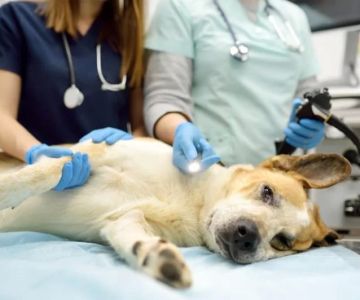Can Cats Get Fleas from Dogs? Understanding Flea Transfer Between Pets
- 1. Introduction to Fleas and Pet Health
- 2. Can Fleas Transfer from Dogs to Cats?
- 3. Preventing Flea Infestations in Pets
- 4. Effective Flea Treatments for Cats and Dogs
- 5. Real-Life Flea Infestation Stories and Lessons Learned
1. Introduction to Fleas and Pet Health
Fleas are one of the most common pests that affect both cats and dogs. These small, blood-sucking insects can cause discomfort and health problems for pets, ranging from itching and scratching to serious skin infections or allergic reactions. While fleas are typically associated with dogs, many pet owners wonder whether their feline companions can catch fleas from their canine counterparts. Understanding how fleas are transferred and the potential risks can help you better protect both your cat and dog from these troublesome pests.
2. Can Fleas Transfer from Dogs to Cats?
Yes, fleas can easily transfer from dogs to cats, as well as between other animals. Fleas are not species-specific, meaning they can live on both cats and dogs, and they can move from one pet to another through direct contact. Fleas generally jump from pet to pet when they are in close proximity, making homes with multiple pets especially vulnerable to flea infestations.
Once a flea jumps onto your pet, it begins feeding on their blood, which can lead to discomfort and further health complications if left unchecked. It's important to monitor both cats and dogs for signs of fleas and to take appropriate action when necessary to prevent a full infestation.
3. Preventing Flea Infestations in Pets
Prevention is the best approach to keep your pets free from fleas. Here are several ways to protect both your cats and dogs from flea infestations:
- Regular Flea Treatments: Use veterinarian-recommended flea treatments, such as topical treatments, oral medications, or flea collars, that can help kill fleas and prevent future infestations.
- Keep Pets Indoors: Limiting outdoor exposure can significantly reduce the likelihood of fleas finding their way into your pets' fur. If your pets do go outdoors, be sure to check them for fleas and ticks upon returning home.
- Maintain a Clean Environment: Regularly clean your home, including vacuuming carpets, rugs, and furniture, as well as washing your pets' bedding, to remove any fleas or eggs that may have been left behind.
- Bathing and Brushing: Regular baths and brushing can help remove fleas from your pet’s fur and keep their skin healthy. However, be sure to use flea-friendly shampoos that are safe for cats and dogs.
By staying proactive and consistently monitoring your pets, you can significantly reduce the chances of fleas spreading from your dog to your cat or vice versa.
4. Effective Flea Treatments for Cats and Dogs
If you suspect your pets have fleas, it's important to act quickly to stop the infestation from spreading. There are several flea treatment options for both cats and dogs:
- Topical Flea Treatments: These are applied directly to your pet's skin and are effective at killing fleas on contact. Popular brands include Advantage, Frontline, and Revolution.
- Oral Flea Medications: Medications like Capstar or Comfortis work by killing fleas that bite your pet within hours. These treatments are often recommended by veterinarians for their quick effectiveness.
- Flea Collars: Flea collars are another preventative measure. They continuously release a small amount of insecticide that repels fleas from your pet's fur. Seresto is a popular option for long-lasting flea control.
- Flea Dips: Flea dips involve immersing your pet in a flea-killing solution and are particularly useful in cases of heavy infestations.
Always consult with your veterinarian before choosing a flea treatment to ensure it’s safe and effective for both your cat and dog. Keep in mind that what works for dogs may not always be safe for cats, so ensure that the products you use are specifically designed for each species.
5. Real-Life Flea Infestation Stories and Lessons Learned
Many pet owners have experienced the frustration of a flea infestation. One pet owner, Sarah, shared her story of how her dog brought fleas into the home, which quickly spread to her cat. "At first, we didn't realize our dog had fleas, but soon both pets were scratching incessantly. It wasn't until I saw a flea on my cat that I realized we had an issue," Sarah explained. She quickly took both pets to the vet and used topical flea treatments to manage the infestation.
Another pet owner, Mark, learned the hard way when his dog picked up fleas at the park, which then spread to his cat. "We had to treat our home, our yard, and both pets to get rid of the fleas," he said. Mark now makes sure to use preventative flea treatments for both his cat and dog, even before flea season starts, to avoid a repeat of the experience.
These real-life stories underscore the importance of early detection and prevention when it comes to fleas. Taking steps to protect both your cats and dogs from fleas will save you time, money, and discomfort in the long run.









